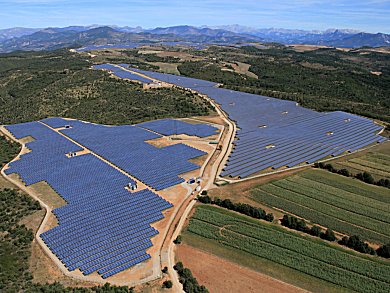Planning large-scale photovoltaics (PV) power plants to make them as efficient as possible is complex. Customer specifications, regulations and government subsidy programs as well as numerous other factors including weather, climate, topography and location, influence the selection and placement of the individual components which include the PV arrays with their solar modules, inverters, and wiring. Until now, engineers have designed solar power plants using computer-aided design (CAD) programs. Every layout and variation is generated separately, which is very time-consuming.
Researchers at the Fraunhofer Institute for Industrial Mathematics ITWM, Kaiserslautern, Germany, in collaboration with Siemens Energy Photovoltaics, have developed a new planning software. The algorithms is programmed for the Siemens PVplanet (PV Plant Engineering Toolbox) software. It provides several hundred different plant designs in a single operation in less than a minute of computation time. The only user inputs are parameters such as the topography of the construction site and the module and inverter types that will be used.
The user can also change a number of parameters – such as the orientation, spacing and inclination of the solar arrays – to study the impact on the quality of the planning result.
To evaluate the designed PV power plants, an income calculation is performed that includes a simulation of the weather in the region in question, the course of the sun throughout the year, and the physical module performance including shading effects. With the results of this computation and an estimate of the investment and operating costs, the planning tool can come up with a figure for the LCOE (levelized cost of energy).
Image: © Siemens AG
- Fraunhofer Institute for Industrial Mathematics ITWM, Kaiserslautern, Germany
- Siemens Energy Photovoltaics, Munich, Germany




